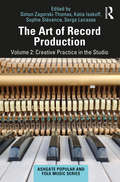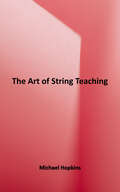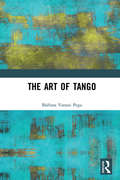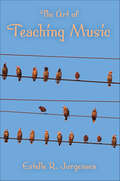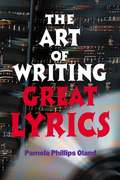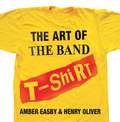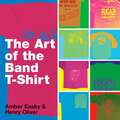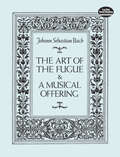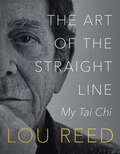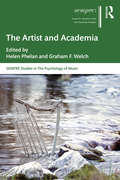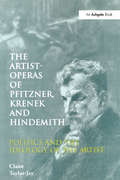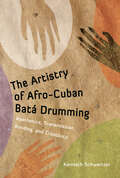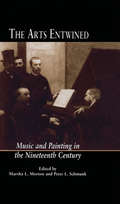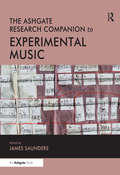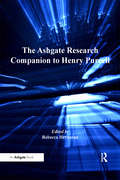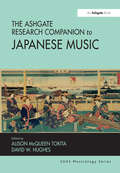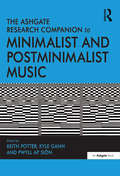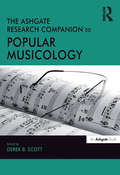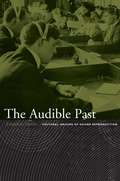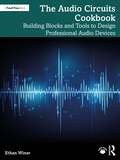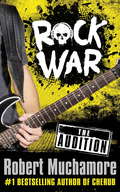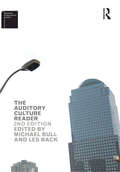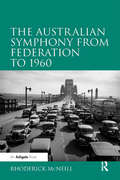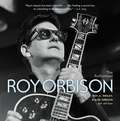- Table View
- List View
The Art of Record Production: Creative Practice in the Studio
The playback of recordings is the primary means of experiencing music in contemporary society, and in recent years 'classical' musicologists and popular music theorists have begun to examine the ways in which the production of recordings affects not just the sound of the final product but also musical aesthetics more generally. Record production can, indeed, be treated as part of the creative process of composition. At the same time, training in the use of these forms of technology has moved from an apprentice-based system into university education. Musical education and music research are thus intersecting to produce a new academic field: the history and analysis of the production of recorded music. This book is designed as a general introductory reader, a text book for undergraduate degree courses studying the creative processes involved in the production of recorded music. The aim is to introduce students to the variety of approaches and methodologies that are currently being employed by scholars in this field. The book is divided into three sections covering historical approaches, theoretical approaches and case studies and practice. There are also three interludes of commentary on the academic contributions from leading record producers and other industry professionals. This collection gives students and scholars a broad overview of the way in which academics from the analytical and practice-based areas of the university system can be brought together with industry professionals to explore the ways in which this new academic field should progress.
The Art of String Teaching
by Michael HopkinsThe Art of String Teaching a hybrid of written text and high-quality online videos is a comprehensive string pedagogy resource covering everything from the origins and history of the string family to advanced-level string techniques. This one-of-a-kind resource has been divided into two parts. In Part I, Michael Hopkins offers an orientation to string education, outlines his philosophical approach to string education, and provides four chapters on the foundational aspects of string playing for beginning string players. Part 2 focuses on intermediate- and advanced-level instruction, touching on such topics as left-hand shifting, vibrato, bowing techniques, tuning skills, improvisation and composition, and music listening, among others. The two concluding chapters offer insight into the string rehearsal and how to run a successful orchestra program. The appendices contain an abundance of practical and convenient teacher resources, including worksheets, flashcards, string repertoire, scales and arpeggios, a template for method book analysis, and sample assessments and rubrics. QR codes throughout the book link to online video demonstrations of string techniques, and the spiral binding is ideal for playing the included string repertoire from a music stand. This book serves as a useful reference guide for professional orchestra conductors, teachers of group string classes, and private studio teachers. It also addresses the needs of students whose primary instrument is not strings and is suited for use in a string techniques or pedagogy course at the college level.
The Art of Tango
by Bárbara Varassi PegaThe Art of Tango offers a systematic exploration of the performance, arrangement and composition of the universally popular tango. The author discusses traditional practices, the De Caro school and the pioneering oeuvre of four celebrated innovators: Pugliese, Salgán, Piazzolla and Beytelmann. With an in-depth focus on both reception and practice, the volume and its companion website featuring supplementary audio-visual materials analyse, decode, compare and discuss literature, scores and recordings to provide a deeper understanding of tango’s artistic concepts, characteristics and techniques. River Plate tango is explored through the lens of artistic research, combining the study of oral traditions and written sources. In addition to a detailed examination of the various approaches to tango by the musicians featured in this book, three compositions by the author embodying creative applications of the research findings are discussed. The volume offers numerous tools for developing skills in practice, inspiring new musical output and the continuation of research endeavours in the field. Illustrating the many possibilities of this musical language that has captivated musicians and audiences worldwide, this book is a valuable resource for everyone with an interest in tango, whether they be composers, performers, arrangers, teachers, music lovers or scholars in the field of popular music studies.
The Art of Teaching Music (Counterpoints: Music and Education)
by Estelle R. JorgensenThe Art of Teaching Music takes up important aspects of the art of music teaching ranging from organization to serving as conductor to dealing with the disconnect between the ideal of university teaching and the reality in the classroom. Writing for both established teachers and instructors on the rise, Estelle R. Jorgensen opens a conversation about the life and work of the music teacher. The author regards music teaching as interrelated with the rest of lived life, and her themes encompass pedagogical skills as well as matters of character, disposition, value, personality, and musicality. She reflects on musicianship and practical aspects of teaching while drawing on a broad base of theory, research, and personal experience. Although grounded in the practical realities of music teaching, Jorgensen urges music teachers to think and act artfully, imaginatively, hopefully, and courageously toward creating a better world.
The Art of Writing Great Lyrics
by Pamela Phillips OlandPacked with literally hundreds of hints, tips, and inside information only a working writer would know, The Art of Writing Great Lyrics demonstrates proven, no-fail methods for everything from communicating through song, defining styles, and collaborating with a partner to studying the market, making a great demo, and getting started on a career. Full of creative exercises, writing do's and don'ts, and a handy A to Z checklist for reviewing new songs, The Art of Writing Great Lyrics provides a lifetime of proven success tips in one indispensable volume.
The Art of the Band T-Shirt
by Amber Easby Henry OliverOnce, T-shirts were just unadorned undergarments. But with the evolution of screen printing and the birth of band merchandising, T-shirts became so much cooler. Now every band with an ounce of savvy knows the importance of T-shirts not only as a lucrative sideline but also as a means of self-promotion and a way for fans to show their allegiance. The Art of the Band T-shirt is a visual history of that perennial fashion statement, complete with nearly two hundred images of the most important, influential, iconic, and ironic T-shirts. It includes shirt images from artists as diverse as Led Zeppelin, the Ramones, Madonna, Morrissey, Public Enemy, and the Flaming Lips, each with a caption that includes historical background, little-known facts, or an artist's comments about the design. A fascinating, beautifully illustrated archive for hipsters, fashionistas, serious collectors, and all music fans, The Art of the Band T-shirt is as indispensable and classically cool as the perfect T-shirt.
The Art of the Band T-shirt
by Amber Easby Henry OliverONCE, T-shirts were just unadorned undergarments. But with the evolution of screen printing and the birth of band merchandising, T-shirts became so much cooler. Now every band with an ounce of savvy knows the importance of T-shirts not only as a lucrative sideline but also as a means of self- promotion and a way for fans to show their allegiance. The Art of the Band T-shirt is a visual history of that perennial fashion statement, complete with nearly two hundred images of the most important, influential, iconic, and ironic T-shirts. It includes shirt images from artists as diverse as Led Zeppelin, the Ramones, Madonna, Morrissey, Public Enemy, and the Flaming Lips, each with a caption that includes historical background, little-known facts, or an artist's comments about the design. A fascinating, beautifully illustrated archive for hipsters, fashionistas, serious collectors, and all music fans, The Art of the Band T-shirt is as indispensable and classically cool as the perfect T-shirt.
The Art of the Fugue and A Musical Offering (Dover Chamber Music Scores)
by Johann Sebastian BachAmong Bach's last instrumental compositions are two splendid works that reflect his genius for working complex contrapuntal figures into an expressive, apparently seamless musical texture. The Art of the Fugue, composed ca. 1745-50, consists of nineteen canons and fugues that progressively illustrate the rich variety and complexity of fugal writing. This edition, reproduced directly from the authoritative Breitkopf & Härtel score, includes a keyboard reproduction printed directly beneath the score.A Musical Offering (1747), composed for King Frederick the Great of Prussia, comprises a three-part ricercar and a six-part ricercar for keyboard, a famous sonata for flute and violin, and a set of canons, all based on a theme devised by the King himself. Solutions of the canons and a realization of the keyboard part are included in an appendix.
The Art of the Straight Line: My Tai Chi
by Laurie Anderson Lou ReedThe Art of the Straight Line captures the energy of Lou Reed’s worlds of Tai Chi, music, and meditation. It was edited by his wife, the artist Laurie Anderson, with Stephan Berwick, Bob Currie, and Scott Richman.Lou Reed was a musician, singer, songwriter, poet, and founding member of the legendary rock band the Velvet Underground. He collaborated with many artists, from Andy Warhol and John Cale to Robert Wilson and Metallica. Reed had a groundbreaking solo career that spanned five decades until his death in 2013.Reed was also an accomplished martial artist whose practice began in the 1980s. He studied with Chen Tai Chi pioneer Master Ren GuangYi. This book is a comprehensive collection of Reed’s writings on Tai Chi. It includes conversations with Reed’s fellow musicians, artists, friends, and Tai Chi practitioners, including Julian Schnabel, A. M. Homes, Hal Willner, Mingyur Rinpoche, Eddie Stern, Tony Visconti, and Iggy Pop.Including over 150 photos, ephemera, and a color photo insert, The Art of the Straight Line features Reed’s unpublished writings on the technique, practice, and purpose of martial arts, as well as essays, observations, and riffs on meditation and life.
The Artist and Academia (SEMPRE Studies in The Psychology of Music)
by Helen PhelanThe Artist and Academia explores the relationship between artistic and academic ways of knowing. Historically, these have often been presented as opposites; the former characterized as passionate and intuitive and the latter portrayed as systematic and rigorous. Recent scholarship presents a more complex picture. Artistic knowledge demands high levels of skill and rigor, while academic research requires creativity and innovative thinking. This edited collection brings together leading artists and scholars (as well as artist-scholars) to offer a variety of philosophical, educational, experiential, reflexive and imaginative perspectives on the artist and academia. The contributions include in-depth, scholarly discussions on the nature of knowledge and creativity, as well as personal artistic statements from musicians, dancers, actors and writers. Additionally, it explores both the mediational and subversive spaces created by the meeting of artistic and academic traditions. While the book addresses global themes by global writers, its core case study is an educational experiment called the Irish World Academy of Music and Dance at the University of Limerick in Ireland. Established in 1994, it set out to reconfigure the place of the artist in the context of contemporary higher education. The material is clustered into three parts. Part One and Part Two explore the artist as mediator, educator and subversive in academia. Grounded in close-to-practice research, Part Three concludes the volume with a set of case studies from the Irish World Academy. Artistic and academic knowledge come together in this unique set of pieces to explore the development of more inclusive and imaginative pedagogical values.
The Artist-Operas of Pfitzner, Krenek and Hindemith: Politics and the Ideology of the Artist
by Claire Taylor-JayThis is the first book-length study of the genre of 'artist-opera', in which the work's central character is an artist who is uncomfortable with his place in the world. It investigates how three such operas (Pfitzner's Palestrina (1915), Krenek's Jonny spielt auf (1926) and Hindemith's Mathis der Maler (1935)) contributed to the debate in early twentieth-century Germany about the place of art and the artist in modern society, and examines how far the artist-character may be taken as functioning as a persona for the real composer of the work. Because of their concern with the place of art within society, the works are also engaged with inherently political questions, and each opera is read in the light of the political context of its time: conservatism circa World War I, Americanism and democracy, and the rise of National Socialism.
The Artistry of Afro-Cuban Batá Drumming: Aesthetics, Transmission, Bonding, and Creativity (Caribbean Studies Series)
by Kenneth SchweitzerAn iconic symbol and sound of the Lucumí/Santería religion, Afro-Cuban batá are talking drums that express the epic mythological narratives of the West African Yoruba deities known as orisha. By imitating aspects of speech and song, and by metaphorically referencing salient attributes of the deities, batá drummers facilitate the communal praising of orisha in a music ritual known as a toque de santo. In The Artistry of Afro-Cuban Batá Drumming, Kenneth Schweitzer blends musical transcription, musical analysis, interviews, ethnographic descriptions, and observations from his own experience as a ritual drummer to highlight the complex variables at work during a live Lucumí performance. Integral in enabling trance possessions by the orisha, by far the most dramatic expressions of Lucumí faith, batá drummers are also entrusted with controlling the overall ebb and flow of the four- to six-hour toque de santo. During these events, batá drummers combine their knowledge of ritual with an extensive repertoire of rhythms and songs. Musicians focus on the many thematic acts that unfold both concurrently and in quick succession. In addition to creating an emotionally charged environment, playing salute rhythms for the orisha, and supporting the playful song competitions that erupt between singers, batá drummers are equally dedicated to nurturing their own drumming community by creating a variety of opportunities for the musicians to grow artistically and creatively.
The Arts Entwined: Music and Painting in the Nineteenth Century (Critical and Cultural Musicology)
by Marsha Morton Peter L. SchmunkThis collection of essays by musicologists and art historians explores the reciprocal influences between music and painting during the nineteenth century, a critical period of gestation when instrumental music was identified as the paradigmatic expressive art and theoretically aligned with painting in the formulation ut pictura musica (as with music, so with painting). Under music's influence, painting approached the threshold of abstraction; concurrently many composers cultivated pictorial effects in their music. Individual essays address such themes as visualization in music, the literary vs. pictorial basis of the symphonic poem, musical pictorialism in painting and lithography, and the influence of Wagner on the visual arts. In these and other ways, both composers and painters actively participated in interarts discourses in seeking to redefine the very identity and aims of their art. Also includes 17 musical examples.
The Arts and Culture of the American Civil War
by James A. DavisIn 1864, Union soldier Charles George described a charge into battle by General Phil Sheridan: "Such a picture of earnestness and determination I never saw as he showed as he came in sight of the battle field . . . What a scene for a painter!" These words proved prophetic, as Sheridan’s desperate ride provided the subject for numerous paintings and etchings as well as songs and poetry. George was not alone in thinking of art in the midst of combat; the significance of the issues under contention, the brutal intensity of the fighting, and the staggering number of casualties combined to form a tragedy so profound that some could not help but view it through an aesthetic lens, to see the war as a concert of death. It is hardly surprising that art influenced the perception and interpretation of the war given the intrinsic role that the arts played in the lives of antebellum Americans. Nor is it surprising that literature, music, and the visual arts were permanently altered by such an emotional and material catastrophe. In The Arts and Culture of the American Civil War, an interdisciplinary team of scholars explores the way the arts – theatre, music, fiction, poetry, painting, architecture, and dance – were influenced by the war as well as the unique ways that art functioned during and immediately following the war. Included are discussions of familiar topics (such as Ambrose Bierce, Peter Rothermel, and minstrelsy) with less-studied subjects (soldiers and dance, epistolary songs). The collection as a whole sheds light on the role of race, class, and gender in the production and consumption of the arts for soldiers and civilians at this time; it also draws attention to the ways that art shaped – and was shaped by – veterans long after the war.
The Ashgate Research Companion to Experimental Music (Routledge Music Companions)
by James SaundersThe recent resurgence of experimental music has given rise to a more divergent range of practices than has previously been the case. The Ashgate Research Companion to Experimental Music reflects these recent developments by providing examples of current thinking and presenting detailed case studies that document the work of contemporary figures. The book examines fourteen current practitioners by interrogating their artistic practices through annotated interviews, contextualized by nine authored chapters which explore central issues that emerge from and inform these discussions. Whilst focusing on composition, the book also encompasses related aspects of performance, improvisation and sonic art. The interviews all explore how the selected artists work, focusing on the processes involved in developing their recent projects, set against more general aesthetic concerns. They aim to shed light on the disparate nature of current work whilst seeking to find possible points of contact. Many of the practitioners are active in areas that span disciplines, such as composition and improvisation, and the book explores the interaction of these activities in the context of their work. The other chapters consider a range of issues pertinent to recent developments in the genre, including: definitions of experimentalism and its relationship with a broader avant garde; experimentalism and cultural change; notation and its effect on composition; realising open scores; issues of notation and interpretation in live electronic music; performing experimental music; improvisation and technology; improvisation and social meaning; instrumentalizing objects; visual artists' relationships to experimental music; working across interdisciplinary boundaries; listening and the soundscape; working methods, techniques and aesthetics of recent experimental music.
The Ashgate Research Companion to Henry Purcell (Routledge Music Companions)
by Rebecca HerissoneThe Ashgate Research Companion to Henry Purcell provides a comprehensive and authoritative review of current research into Purcell and the environment of Restoration music, with contributions from leading experts in the field. Seen from the perspective of modern, interdisciplinary approaches to scholarship, the companion allows the reader to develop a rounded view of the environment in which Purcell lived, the people with whom he worked, the social conditions that influenced his activities, and the ways in which the modern perception of him has been affected by reception of his music after his death. In this sense the contributions do not privilege the individual over the environment: rather, they use the modern reader's familiarity with Purcell's music as a gateway into the broader Restoration world. Topics include a reassessment of our understanding of Purcell's sources and the transmission of his music; new ways of approaching the study of his creative methods; performance practice; the multi-faceted theatre environment in which his work was focused in the last five years of his life; the importance of the political and social contexts of late seventeenth-century England; and the ways in which the performance history and reception of his music have influenced modern appreciation of the composer. The book will be essential reading for anyone studying the music and culture of the seventeenth century.
The Ashgate Research Companion to Japanese Music (SOAS Studies in Music)
by David W. HughesMusic is a frequently neglected aspect of Japanese culture. It is in fact a highly problematic area, as the Japanese actively introduced Western music into their modern education system in the Meiji period (1868-1911), creating westernized melodies and instrumental instruction for Japanese children from kindergarten upwards. As a result, most Japanese now have a far greater familiarity with Western (or westernized) music than with traditional Japanese music. Traditional or classical Japanese music has become somewhat ghettoized, often known and practised only by small groups of people in social structures which have survived since the pre-modern era. Such marginalization of Japanese music is one of the less recognized costs of Japan's modernization. On the other hand, music in its westernized and modernized forms has an extremely important place in Japanese culture and society, Beethoven's Ninth Symphony, for example, being so widely known and performed that it is arguably part of contemporary Japanese popular and mass culture. Japan has become a world leader in the mass production of Western musical instruments and in innovative methodologies of music education (Yamaha and Suzuki). More recently, the Japanese craze of karaoke as a musical entertainment and as musical hardware has made an impact on the leisure and popular culture of many countries in Asia, Europe and the Americas. This is the first book to cover in detail all genres including court music, Buddhist chant, theatre music, chamber ensemble music and folk music, as well as contemporary music and the connections between music and society in various periods. The book is a collaborative effort, involving both Japanese and English speaking authors, and was conceived by the editors to form a balanced approach that comprehensively treats the full range of Japanese musical culture.
The Ashgate Research Companion to Minimalist and Postminimalist Music (Routledge Music Companions)
by Kyle Gann Keith PotterIn recent years the music of minimalist composers such as La Monte Young, Terry Riley, Steve Reich and Philip Glass has, increasingly, become the subject of important musicological reflection, research and debate. Scholars have also been turning their attention to the work of lesser-known contemporaries such as Phill Niblock and Eliane Radigue, or to second and third generation minimalists such as John Adams, Louis Andriessen, Michael Nyman and William Duckworth, whose range of styles may undermine any sense of shared aesthetic approach but whose output is still to a large extent informed by the innovative work of their minimalist predecessors. Attempts have also been made by a number of academics to contextualise the work of composers who have moved in parallel with these developments while remaining resolutely outside its immediate environment, including such diverse figures as Karel Goeyvaerts, Robert Ashley, Arvo Pärt and Brian Eno. Theory has reflected practice in many respects, with the multimedia works of Reich and Glass encouraging interdisciplinary approaches, associations and interconnections. Minimalism’s role in culture and society has also become the subject of recent interest and debate, complementing existing scholarship, which addressed the subject from the perspective of historiography, analysis, aesthetics and philosophy. The Ashgate Research Companion to Minimalist and Postminimalist Music provides an authoritative overview of established research in this area, while also offering new and innovative approaches to the subject.
The Ashgate Research Companion to Popular Musicology (Routledge Music Companions)
by Derek B. ScottThe research presented in this volume is very recent, and the general approach is that of rethinking popular musicology: its purpose, its aims, and its methods. Contributors to the volume were asked to write something original and, at the same time, to provide an instructive example of a particular way of working and thinking. The essays have been written with a view to helping graduate students with research methodology and the application of relevant theoretical models. The team of contributors is an exceptionally strong one: it contains many of the pre-eminent academic figures involved in popular musicological research, and there is a spread of European, American, Asian, and Australasian scholars. The volume covers seven main themes: Film, Video and Multimedia; Technology and Studio Production; Gender and Sexuality; Identity and Ethnicity; Performance and Gesture; Reception and Scenes and The Music Industry and Globalization. The Ashgate Research Companion is designed to offer scholars and graduate students a comprehensive and authoritative state-of-the-art review of current research in a particular area. The companion's editor brings together a team of respected and experienced experts to write chapters on the key issues in their speciality, providing a comprehensive reference to the field.
The Audible Past: Cultural Origins of Sound Reproduction
by Jonathan SterneThe Audible Past explores the cultural origins of sound reproduction. It describes a distinctive sound culture that gave birth to the sound recording and the transmission devices so ubiquitous in modern life. With an ear for the unexpected, scholar and musician Jonathan Sterne uses the technological and cultural precursors of telephony, phonography, and radio as an entry point into a history of sound in its own right. Sterne studies the constantly shifting boundary between phenomena organized as "sound" and "not sound. " In The Audible Past, this history crisscrosses the liminal regions between bodies and machines, originals and copies, nature and culture, and life and death. Blending cultural studies and the history of communication technology, Sterne follows modern sound technologies back through a historical labyrinth. Along the way, he encounters capitalists and inventors, musicians and philosophers, embalmers and grave robbers, doctors and patients, deaf children and their teachers, professionals and hobbyists, folklorists and tribal singers. The Audible Past tracks the connections between the history of sound and the defining features of modernity: from developments in medicine, physics, and philosophy to the tumultuous shifts of industrial capitalism, colonialism, urbanization, modern technology, and the rise of a new middle class. A provocative history of sound, The Audible Past challenges theoretical commonplaces such as the philosophical privilege of the speaking subject, the visual bias in theories of modernity, and static descriptions of nature. It will interest those in cultural studies, media and communication studies, the new musicology, and the history of technology.
The Audio Circuits Cookbook: Building Blocks and Tools to Design Professional Audio Devices
by Ethan WinerThe Audio Circuits Cookbook is a comprehensive collection of high-quality audio circuit modules—“building blocks” —that readers can arrange to create complete audio devices. More than 80 featured circuits cover every aspect of audio, from basics such as active rectifiers, peak followers, and oscillators, to complete professional quality devices including compressors, equalizers, preamps, and an analog synthesizer.Offering a range of tutorial advice that covers capacitor selection, multi-layer PC board design, and more, each circuit in this book is also provided as an LTspice file, ready to be copied into your projects. It includes detailed explanations of every type of active filter commonly used for audio, along with a spreadsheet that calculates their component values, as well as Ohm’s Law and Decibels spreadsheets.Providing practical explanations of both simple and sophisticated audio circuits using minimal math and theory, this is an ideal manual for intermediate audio professionals, hobbyists, and students coming to audio electronics from non-engineering backgrounds. Professional engineers will find much of value as well in the complete and tested circuits.
The Audition: World Book Day 2014 (Rock War #100)
by Robert MuchamoreTwo kids, one band, one crucial audition. Noah's a natural on the guitar, and he'd give anything to get through the Rock War audition. But when he betrays his best friend to join another band, he knows he's crossed the line. Will he risk their friendship for the sake of musical stardom?Introducing new characters, a never-before-seen band, and a behind-the-scenes look at the Rock War auditions, in a story written especially for World Book Day.
The Auditory Culture Reader (Sensory Formations)
by Michael BullThe first edition of The Auditory Culture Reader offered an introduction to both classical and recent work on auditory culture, laying the foundations for new academic research in sound studies. Today, interest and research on sound thrives across disciplines such as music, anthropology, geography, sociology and cultural studies as well as within the new interdisciplinary sphere of sound studies itself. This second edition reflects on the changes to the field since the first edition and offers a vast amount of new content, a user-friendly organization which highlights key themes and concepts, and a methodologies section which addresses practical questions for students setting out on auditory explorations. All essays are accessible to non-experts and encompass scholarship from leading figures in the field, discussing issues relating to sound and listening from the broadest set of interdisciplinary perspectives. Inspiring students and researchers attentive to sound in their work, newly-commissioned and classical excerpts bring urban research and ethnography alive with sensory case studies that open up a world beyond the visual. This book is core reading for all courses that cover the role of sound in culture, within sound studies, anthropology, sociology, cultural studies, history, media studies and urban geography.
The Australian Symphony from Federation to 1960
by Rhoderick McNeillThe symphony retained its primacy as the most prestigious large-scale orchestral form throughout the first half of the twentieth century, particularly in Britain, Russia and the United States. Likewise, Australian composers produced a steady stream of symphonies throughout the period from Federation (1901) through to the end of the 1950s. Stylistically, these works ranged from essays in late nineteenth-century romanticism, twentieth-century nationalism, neo-classicism and near-atonality. Australian symphonies were most prolific during the 1950s, with 36 local entries in the 1951 Commonwealth Jubilee Symphony competition. This extensive repertoire was overshadowed by the emergence of a new generation of composers and critics during the 1960s who tended to regard older Australian music as old-fashioned and derivative. The Australian Symphony from Federation to 1960 is the first study of this neglected genre and has four aims: firstly, to show the development of symphonic composition in Australia from Federation to 1960; secondly, to highlight the achievement of the main composers who wrote symphonies; thirdly, to advocate the restoration and revival of this repertory; and, lastly, to take a step towards a recasting of the narrative of Australian concert music from Federation to the present. In particular, symphonies by Marshall-Hall, Hart, Bainton, Hughes, Le Gallienne and Morgan emerge as works of particular note.
The Authorized Roy Orbison
by Alex Orbison Roy Orbison Wesley Orbison Jeff SlateFor the first time, legendary performer Roy Orbison's story as one of the most beloved rock legends will be revealed through family accounts and records. p.p1 {margin: 0.0px 0.0px 0.0px 0.0px; text-indent: 36.0px; font: 12.0px Geneva} p.p2 {margin: 0.0px 0.0px 0.0px 0.0px; font: 12.0px Geneva} span.Apple-tab-span {white-space:pre} Roy Orbison is a rock and roll icon almost without peer. He came of age as an artist on the venerable Sun Records label; toured with The Beatles; had massive hits in the 1960s, 1970s, and 1980s; invented the black-clad, sunglasses-wearing image of the rock star; and reinvented the art of songwriting many times over. He is a member of the Rock & Roll and Songwriters Halls of Fame, a recipient of the Musicians Hall of Fame's inaugural Iconic Riff Award, and the winner of multiple GRAMMY® awards. He is known the world over for hits like "Blue Bayou," "You Got It," and "Oh, Pretty Woman" and was a member of the band that inspired the term "supergroup"-the Traveling Wilburys, with Bob Dylan, George Harrison, Jeff Lynne, and Tom Petty. Despite these and countless other accolades, the story of Roy Orbison's life is virtually unknown to his millions of fans around the world. Now, for the first time ever, the Orbison Estate, headed by Roy's sons, Wesley, Roy Jr., and Alex Orbison, has set out to set the record straight. The Authorized Roy Orbison tells the epic tale of a West Texas boy, drawn to the guitar at age six, whose monumental global career successes were matched at nearly every turn by extraordinary personal tragedies, including the loss of his first wife in a motorcycle accident and his two oldest sons in a fire. It's a story of the intense highs and severe lows that make up the mountain range of Roy Orbison's career; one that touched four decades and ended abruptly at perhaps its highest peak, when he passed away at the age of fifty-two on December 6, 1988. Filled with hundreds of photographs, many never before seen, gathered from across the globe and uncovered from deep within the Orbison Vault, The Authorized Roy Orbison shows Roy Orbison as a young child and follows him all the way through to the peak of his stardom and up to his tragic end. Wesley, Roy Jr., and Alex Orbison-Roy's Boys-have left no stone unturned in order to illustrate the people, places, things, and events that forged their father, the man behind those famous sunglasses.
